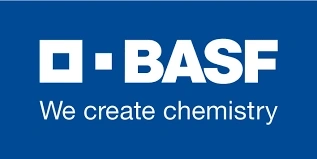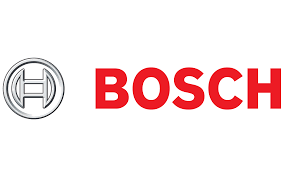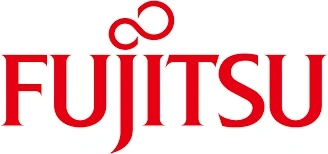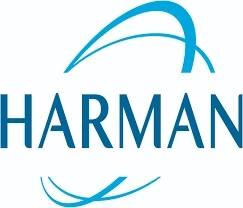
2023-2028 Global and Regional Plant-Based Food Ingredient Industry Status and Prospects Professional Market Research Report Standard Version
Didn't find what you're looking for?
Chemicals & Materials
2023-2028 Global and Regional Plant-Based Food Ingredient Industry Status and Prospects Professional Market Research Report Standard Version
Description
ToC
Tables & Figures
Companies
Speak with Analyst
Globally, the Plant Based Food Ingredients Market is expected to expand at a significant CAGR over the next few years due to its growing scope and applications. Key factors such as rising demand for plant-based products, increasing number of health-conscious populace, and growing consumption of vitamin-based health supplements are expected to drive global market revenue growth during the forecast period.
Over years, changing lifestyle patterns, rising prevalence of chronic and lifestyle-associated diseases, and increasing awareness about environmental impact have resulted in rising number of vegetarians and vegans and increased consumption of plant-based food. Plant based food is primarily made from fruits, vegetables, plant extracts, nuts, seeds, oils, whole grains, legumes, and beans which are rich in proteins, fats, carbohydrates, minerals and help to boost immune system, reduce inflammation, maintain a healthy weight, increase fiber and lower the risks of cancer and chronic diseases. Some of the commonly used plant-based food ingredients include soy, mushroom, peas, rice, quinoa, sweet potatoes, almond, cashew, berries, bananas, oatmeal, peaches, figs, and lentils among others.
However, factors such as high cost of plant-based food ingredients, low awareness about the environmental impact of consuming animal-based products and benefits of plant-based food are expected to hamper overall market growth to a certain extent during the forecast period.
Soy Segment To Register Rapid Revenue CAGR:
The soy segment is expected to register rapid revenue CAGR over the forecast period. Factors such as increasing preference for protein-rich and animal-free products, growing inclination towards vegan and vegetarian diets, and high demand for soy and soy foods due to high protein content and ability to be processed into meat and milk substitutes are expected to drive segment revenue growth during the forecast period.
Plant-based Milk Segment to Account for Largest Revenue Share:
The plant-based milk segment is expected to account for largest revenue share between 2022 and 2028. This can be attributed to steady increase in the adoption of veganism across the globe, high preference for milk extracted from soy, almonds, and cashew, growing awareness about rising environmental concerns and benefits of plant-based products, and rising availability of various types of plant-based milk and milk products.
North America to Lead In Terms of Revenue Share:
North America is expected to account for largest revenue share in the global market during the forecast period owing to rising number of health-conscious people across the region, growing demand for plant-based good products, increasing number of lactose intolerant cases, and presence of leading plant-based food ingredients. In addition, growing consumer preference for fortified confectionery and bakery products, rising veganism across the region, and increasing investments in developing more tasty ingredients are expected to drive North America market growth during the forecast period.
Plant based Food Ingredients Industry Recent Developments:
In May 2022, Novolutions launched a novel plant-based food brand, ‘Just Dig In’ to expand its plant-based protein portfolio.
In November 2022, International Flavors & Fragrances announced the launch of a soy-based ingredient, Supro Tex that can mimic products with similar texture to chunks of whole muscle meat.
By Market Vendors:
Ingredion
Archer-Daniels-Midland Company
DuPont de Nemours
Cargill
Puris Proteins
BI Nutraceuticals
Olam International
SunOpta
Döhler GmbH
The Scoular Company
By Types:
Soy
Pea
Rice
Almond
Cashew
By Applications:
Plant-Based Milk
Bakery and Confectionery
Key Indicators Analysed
Market Players & Competitor Analysis: The report covers the key players of the industry including Company Profile, Product Specifications, Production Capacity/Sales, Revenue, Price and Gross Margin 2016-2027 & Sales with a thorough analysis of the market’s competitive landscape and detailed information on vendors and comprehensive details of factors that will challenge the growth of major market vendors.
Global and Regional Market Analysis: The report includes Global & Regional market status and outlook 2016-2027. Further the report provides break down details about each region & countries covered in the report. Identifying its sales, sales volume & revenue forecast. With detailed analysis by types and applications.
Market Trends: Market key trends which include Increased Competition and Continuous Innovations.
Opportunities and Drivers: Identifying the Growing Demands and New Technology
Porters Five Force Analysis: The report provides with the state of competition in industry depending on five basic forces: threat of new entrants, bargaining power of suppliers, bargaining power of buyers, threat of substitute products or services, and existing industry rivalry.
Key Reasons to Purchase:
Estimates 2023 to 2028 plant based food ingredients market current market trends and development trends
Market dynamics along with growth opportunities of the market in the years to come
Market segmentation analysis including qualitative and quantitative research incorporating the impact of economic and policy aspects
Regional and country level analysis integrating the demand and supply forces that are influencing the growth of the Plant based Food Ingredients market
Competitive landscape involving market share of the major players, new strategies and projects adopted by players in the last five years
Comprehensive company profiles covering product offerings, key financial information, SWOT analysis and strategies employed by major market players
Brief about impact of COVID-19 on the global Plant based Food Ingredients market
Key Questions Addressed:
What revenue CAGR is the global market expected to register during the forecast period?
Which key players are leading in the global plant based food ingredients market?
What is the expected market size of the global plant based food ingredients market between 2023 and 2028?
What factors are expected to open new growth avenues and opportunities for existing and emerging market players?
What are some of the key challenges that the global market is expected to face during the forecast period?
Which region is expected to account for largest revenue share over the forecast period?
FAQ
- You should buy this report from Xcellent Insights for a better clarity on market scenarios.
- The market report has been prepared using a pragmatic approach to suit your needs.
- We have an extensive library of reports that can help you understand the market landscape and make informed decisions about your business.
- Additionally, the reports are written by experienced analysts who have a deep understanding of the market and the latest trends.
- Besides, customization is a value-added service if you decide to opt.
Table of Content
Chapter 1 Industry Overview
1.1 Definition
1.2 Assumptions
1.3 Research Scope
1.4 Market Analysis by Regions
1.4.1 North America Market States and Outlook (2023-2028)
1.4.2 East Asia Market States and Outlook (2023-2028)
1.4.3 Europe Market States and Outlook (2023-2028)
1.4.4 South Asia Market States and Outlook (2023-2028)
1.4.5 Southeast Asia Market States and Outlook (2023-2028)
1.4.6 Middle East Market States and Outlook (2023-2028)
1.4.7 Africa Market States and Outlook (2023-2028)
1.4.8 Oceania Market States and Outlook (2023-2028)
1.4.9 South America Market States and Outlook (2023-2028)
1.5 Global Plant-Based Food Ingredient Market Size Analysis from 2023 to 2028
1.5.1 Global Plant-Based Food Ingredient Market Size Analysis from 2023 to 2028 by Consumption Volume
1.5.2 Global Plant-Based Food Ingredient Market Size Analysis from 2023 to 2028 by Value
1.5.3 Global Plant-Based Food Ingredient Price Trends Analysis from 2023 to 2028
1.6 COVID-19 Outbreak: Plant-Based Food Ingredient Industry Impact
Chapter 2 Global Plant-Based Food Ingredient Competition by Types, Applications, and Top Regions and Countries
2.1 Global Plant-Based Food Ingredient (Volume and Value) by Type
2.1.1 Global Plant-Based Food Ingredient Consumption and Market Share by Type (2018-2023)
2.1.2 Global Plant-Based Food Ingredient Revenue and Market Share by Type (2018-2023)
2.2 Global Plant-Based Food Ingredient (Volume and Value) by Application
2.2.1 Global Plant-Based Food Ingredient Consumption and Market Share by Application (2018-2023)
2.2.2 Global Plant-Based Food Ingredient Revenue and Market Share by Application (2018-2023)
2.3 Global Plant-Based Food Ingredient (Volume and Value) by Regions
2.3.1 Global Plant-Based Food Ingredient Consumption and Market Share by Regions (2018-2023)
2.3.2 Global Plant-Based Food Ingredient Revenue and Market Share by Regions (2018-2023)
Chapter 3 Production Market Analysis
3.1 Global Production Market Analysis
3.1.1 2018-2023 Global Capacity, Production, Capacity Utilization Rate, Ex-Factory Price, Revenue, Cost, Gross and Gross Margin Analysis
3.1.2 2018-2023 Major Manufacturers Performance and Market Share
3.2 Regional Production Market Analysis
3.2.1 2018-2023 Regional Market Performance and Market Share
3.2.2 North America Market
3.2.3 East Asia Market
3.2.4 Europe Market
3.2.5 South Asia Market
3.2.6 Southeast Asia Market
3.2.7 Middle East Market
3.2.8 Africa Market
3.2.9 Oceania Market
3.2.10 South America Market
3.2.11 Rest of the World Market
Chapter 4 Global Plant-Based Food Ingredient Sales, Consumption, Export, Import by Regions (2018-2023)
4.1 Global Plant-Based Food Ingredient Consumption by Regions (2018-2023)
4.2 North America Plant-Based Food Ingredient Sales, Consumption, Export, Import (2018-2023)
4.3 East Asia Plant-Based Food Ingredient Sales, Consumption, Export, Import (2018-2023)
4.4 Europe Plant-Based Food Ingredient Sales, Consumption, Export, Import (2018-2023)
4.5 South Asia Plant-Based Food Ingredient Sales, Consumption, Export, Import (2018-2023)
4.6 Southeast Asia Plant-Based Food Ingredient Sales, Consumption, Export, Import (2018-2023)
4.7 Middle East Plant-Based Food Ingredient Sales, Consumption, Export, Import (2018-2023)
4.8 Africa Plant-Based Food Ingredient Sales, Consumption, Export, Import (2018-2023)
4.9 Oceania Plant-Based Food Ingredient Sales, Consumption, Export, Import (2018-2023)
4.10 South America Plant-Based Food Ingredient Sales, Consumption, Export, Import (2018-2023)
Chapter 5 North America Plant-Based Food Ingredient Market Analysis
5.1 North America Plant-Based Food Ingredient Consumption and Value Analysis
5.1.1 North America Plant-Based Food Ingredient Market Under COVID-19
5.2 North America Plant-Based Food Ingredient Consumption Volume by Types
5.3 North America Plant-Based Food Ingredient Consumption Structure by Application
5.4 North America Plant-Based Food Ingredient Consumption by Top Countries
5.4.1 United States Plant-Based Food Ingredient Consumption Volume from 2018 to 2022
5.4.2 Canada Plant-Based Food Ingredient Consumption Volume from 2018 to 2022
5.4.3 Mexico Plant-Based Food Ingredient Consumption Volume from 2018 to 2022
Chapter 6 East Asia Plant-Based Food Ingredient Market Analysis
6.1 East Asia Plant-Based Food Ingredient Consumption and Value Analysis
6.1.1 East Asia Plant-Based Food Ingredient Market Under COVID-19
6.2 East Asia Plant-Based Food Ingredient Consumption Volume by Types
6.3 East Asia Plant-Based Food Ingredient Consumption Structure by Application
6.4 East Asia Plant-Based Food Ingredient Consumption by Top Countries
6.4.1 China Plant-Based Food Ingredient Consumption Volume from 2018 to 2022
6.4.2 Japan Plant-Based Food Ingredient Consumption Volume from 2018 to 2022
6.4.3 South Korea Plant-Based Food Ingredient Consumption Volume from 2018 to 2022
Chapter 7 Europe Plant-Based Food Ingredient Market Analysis
7.1 Europe Plant-Based Food Ingredient Consumption and Value Analysis
7.1.1 Europe Plant-Based Food Ingredient Market Under COVID-19
7.2 Europe Plant-Based Food Ingredient Consumption Volume by Types
7.3 Europe Plant-Based Food Ingredient Consumption Structure by Application
7.4 Europe Plant-Based Food Ingredient Consumption by Top Countries
7.4.1 Germany Plant-Based Food Ingredient Consumption Volume from 2018 to 2022
7.4.2 UK Plant-Based Food Ingredient Consumption Volume from 2018 to 2022
7.4.3 France Plant-Based Food Ingredient Consumption Volume from 2018 to 2022
7.4.4 Italy Plant-Based Food Ingredient Consumption Volume from 2018 to 2022
7.4.5 Russia Plant-Based Food Ingredient Consumption Volume from 2018 to 2022
7.4.6 Spain Plant-Based Food Ingredient Consumption Volume from 2018 to 2022
7.4.7 Netherlands Plant-Based Food Ingredient Consumption Volume from 2018 to 2022
7.4.8 Switzerland Plant-Based Food Ingredient Consumption Volume from 2018 to 2022
7.4.9 Poland Plant-Based Food Ingredient Consumption Volume from 2018 to 2022
Chapter 8 South Asia Plant-Based Food Ingredient Market Analysis
8.1 South Asia Plant-Based Food Ingredient Consumption and Value Analysis
8.1.1 South Asia Plant-Based Food Ingredient Market Under COVID-19
8.2 South Asia Plant-Based Food Ingredient Consumption Volume by Types
8.3 South Asia Plant-Based Food Ingredient Consumption Structure by Application
8.4 South Asia Plant-Based Food Ingredient Consumption by Top Countries
8.4.1 India Plant-Based Food Ingredient Consumption Volume from 2018 to 2022
8.4.2 Pakistan Plant-Based Food Ingredient Consumption Volume from 2018 to 2022
8.4.3 Bangladesh Plant-Based Food Ingredient Consumption Volume from 2018 to 2022
Chapter 9 Southeast Asia Plant-Based Food Ingredient Market Analysis
9.1 Southeast Asia Plant-Based Food Ingredient Consumption and Value Analysis
9.1.1 Southeast Asia Plant-Based Food Ingredient Market Under COVID-19
9.2 Southeast Asia Plant-Based Food Ingredient Consumption Volume by Types
9.3 Southeast Asia Plant-Based Food Ingredient Consumption Structure by Application
9.4 Southeast Asia Plant-Based Food Ingredient Consumption by Top Countries
9.4.1 Indonesia Plant-Based Food Ingredient Consumption Volume from 2018 to 2022
9.4.2 Thailand Plant-Based Food Ingredient Consumption Volume from 2018 to 2022
9.4.3 Singapore Plant-Based Food Ingredient Consumption Volume from 2018 to 2022
9.4.4 Malaysia Plant-Based Food Ingredient Consumption Volume from 2018 to 2022
9.4.5 Philippines Plant-Based Food Ingredient Consumption Volume from 2018 to 2022
9.4.6 Vietnam Plant-Based Food Ingredient Consumption Volume from 2018 to 2022
9.4.7 Myanmar Plant-Based Food Ingredient Consumption Volume from 2018 to 2022
Chapter 10 Middle East Plant-Based Food Ingredient Market Analysis
10.1 Middle East Plant-Based Food Ingredient Consumption and Value Analysis
10.1.1 Middle East Plant-Based Food Ingredient Market Under COVID-19
10.2 Middle East Plant-Based Food Ingredient Consumption Volume by Types
10.3 Middle East Plant-Based Food Ingredient Consumption Structure by Application
10.4 Middle East Plant-Based Food Ingredient Consumption by Top Countries
10.4.1 Turkey Plant-Based Food Ingredient Consumption Volume from 2018 to 2022
10.4.2 Saudi Arabia Plant-Based Food Ingredient Consumption Volume from 2018 to 2022
10.4.3 Iran Plant-Based Food Ingredient Consumption Volume from 2018 to 2022
10.4.4 United Arab Emirates Plant-Based Food Ingredient Consumption Volume from 2018 to 2022
10.4.5 Israel Plant-Based Food Ingredient Consumption Volume from 2018 to 2022
10.4.6 Iraq Plant-Based Food Ingredient Consumption Volume from 2018 to 2022
10.4.7 Qatar Plant-Based Food Ingredient Consumption Volume from 2018 to 2022
10.4.8 Kuwait Plant-Based Food Ingredient Consumption Volume from 2018 to 2022
10.4.9 Oman Plant-Based Food Ingredient Consumption Volume from 2018 to 2022
Chapter 11 Africa Plant-Based Food Ingredient Market Analysis
11.1 Africa Plant-Based Food Ingredient Consumption and Value Analysis
11.1.1 Africa Plant-Based Food Ingredient Market Under COVID-19
11.2 Africa Plant-Based Food Ingredient Consumption Volume by Types
11.3 Africa Plant-Based Food Ingredient Consumption Structure by Application
11.4 Africa Plant-Based Food Ingredient Consumption by Top Countries
11.4.1 Nigeria Plant-Based Food Ingredient Consumption Volume from 2018 to 2022
11.4.2 South Africa Plant-Based Food Ingredient Consumption Volume from 2018 to 2022
11.4.3 Egypt Plant-Based Food Ingredient Consumption Volume from 2018 to 2022
11.4.4 Algeria Plant-Based Food Ingredient Consumption Volume from 2018 to 2022
11.4.5 Morocco Plant-Based Food Ingredient Consumption Volume from 2018 to 2022
Chapter 12 Oceania Plant-Based Food Ingredient Market Analysis
12.1 Oceania Plant-Based Food Ingredient Consumption and Value Analysis
12.2 Oceania Plant-Based Food Ingredient Consumption Volume by Types
12.3 Oceania Plant-Based Food Ingredient Consumption Structure by Application
12.4 Oceania Plant-Based Food Ingredient Consumption by Top Countries
12.4.1 Australia Plant-Based Food Ingredient Consumption Volume from 2018 to 2022
12.4.2 New Zealand Plant-Based Food Ingredient Consumption Volume from 2018 to 2022
Chapter 13 South America Plant-Based Food Ingredient Market Analysis
13.1 South America Plant-Based Food Ingredient Consumption and Value Analysis
13.1.1 South America Plant-Based Food Ingredient Market Under COVID-19
13.2 South America Plant-Based Food Ingredient Consumption Volume by Types
13.3 South America Plant-Based Food Ingredient Consumption Structure by Application
13.4 South America Plant-Based Food Ingredient Consumption Volume by Major Countries
13.4.1 Brazil Plant-Based Food Ingredient Consumption Volume from 2018 to 2022
13.4.2 Argentina Plant-Based Food Ingredient Consumption Volume from 2018 to 2022
13.4.3 Columbia Plant-Based Food Ingredient Consumption Volume from 2018 to 2022
13.4.4 Chile Plant-Based Food Ingredient Consumption Volume from 2018 to 2022
13.4.5 Venezuela Plant-Based Food Ingredient Consumption Volume from 2018 to 2022
13.4.6 Peru Plant-Based Food Ingredient Consumption Volume from 2018 to 2022
13.4.7 Puerto Rico Plant-Based Food Ingredient Consumption Volume from 2018 to 2022
13.4.8 Ecuador Plant-Based Food Ingredient Consumption Volume from 2018 to 2022
Chapter 14 Company Profiles and Key Figures in Plant-Based Food Ingredient Business
14.1 Ingredion
14.1.1 Ingredion Company Profile
14.1.2 Ingredion Plant-Based Food Ingredient Product Specification
14.1.3 Ingredion Plant-Based Food Ingredient Production Capacity, Revenue, Price and Gross Margin (2018-2023)
14.2 Archer-Daniels-Midland Company
14.2.1 Archer-Daniels-Midland Company Company Profile
14.2.2 Archer-Daniels-Midland Company Plant-Based Food Ingredient Product Specification
14.2.3 Archer-Daniels-Midland Company Plant-Based Food Ingredient Production Capacity, Revenue, Price and Gross Margin (2018-2023)
14.3 DuPont de Nemours
14.3.1 DuPont de Nemours Company Profile
14.3.2 DuPont de Nemours Plant-Based Food Ingredient Product Specification
14.3.3 DuPont de Nemours Plant-Based Food Ingredient Production Capacity, Revenue, Price and Gross Margin (2018-2023)
14.4 Cargill
14.4.1 Cargill Company Profile
14.4.2 Cargill Plant-Based Food Ingredient Product Specification
14.4.3 Cargill Plant-Based Food Ingredient Production Capacity, Revenue, Price and Gross Margin (2018-2023)
14.5 Puris Proteins
14.5.1 Puris Proteins Company Profile
14.5.2 Puris Proteins Plant-Based Food Ingredient Product Specification
14.5.3 Puris Proteins Plant-Based Food Ingredient Production Capacity, Revenue, Price and Gross Margin (2018-2023)
14.6 BI Nutraceuticals
14.6.1 BI Nutraceuticals Company Profile
14.6.2 BI Nutraceuticals Plant-Based Food Ingredient Product Specification
14.6.3 BI Nutraceuticals Plant-Based Food Ingredient Production Capacity, Revenue, Price and Gross Margin (2018-2023)
14.7 Olam International
14.7.1 Olam International Company Profile
14.7.2 Olam International Plant-Based Food Ingredient Product Specification
14.7.3 Olam International Plant-Based Food Ingredient Production Capacity, Revenue, Price and Gross Margin (2018-2023)
14.8 SunOpta
14.8.1 SunOpta Company Profile
14.8.2 SunOpta Plant-Based Food Ingredient Product Specification
14.8.3 SunOpta Plant-Based Food Ingredient Production Capacity, Revenue, Price and Gross Margin (2018-2023)
14.9 Döhler GmbH
14.9.1 Döhler GmbH Company Profile
14.9.2 Döhler GmbH Plant-Based Food Ingredient Product Specification
14.9.3 Döhler GmbH Plant-Based Food Ingredient Production Capacity, Revenue, Price and Gross Margin (2018-2023)
14.10 The Scoular Company
14.10.1 The Scoular Company Company Profile
14.10.2 The Scoular Company Plant-Based Food Ingredient Product Specification
14.10.3 The Scoular Company Plant-Based Food Ingredient Production Capacity, Revenue, Price and Gross Margin (2018-2023)
Chapter 15 Global Plant-Based Food Ingredient Market Forecast (2023-2028)
15.1 Global Plant-Based Food Ingredient Consumption Volume, Revenue and Price Forecast (2023-2028)
15.1.1 Global Plant-Based Food Ingredient Consumption Volume and Growth Rate Forecast (2023-2028)
15.1.2 Global Plant-Based Food Ingredient Value and Growth Rate Forecast (2023-2028)
15.2 Global Plant-Based Food Ingredient Consumption Volume, Value and Growth Rate Forecast by Region (2023-2028)
15.2.1 Global Plant-Based Food Ingredient Consumption Volume and Growth Rate Forecast by Regions (2023-2028)
15.2.2 Global Plant-Based Food Ingredient Value and Growth Rate Forecast by Regions (2023-2028)
15.2.3 North America Plant-Based Food Ingredient Consumption Volume, Revenue and Growth Rate Forecast (2023-2028)
15.2.4 East Asia Plant-Based Food Ingredient Consumption Volume, Revenue and Growth Rate Forecast (2023-2028)
15.2.5 Europe Plant-Based Food Ingredient Consumption Volume, Revenue and Growth Rate Forecast (2023-2028)
15.2.6 South Asia Plant-Based Food Ingredient Consumption Volume, Revenue and Growth Rate Forecast (2023-2028)
15.2.7 Southeast Asia Plant-Based Food Ingredient Consumption Volume, Revenue and Growth Rate Forecast (2023-2028)
15.2.8 Middle East Plant-Based Food Ingredient Consumption Volume, Revenue and Growth Rate Forecast (2023-2028)
15.2.9 Africa Plant-Based Food Ingredient Consumption Volume, Revenue and Growth Rate Forecast (2023-2028)
15.2.10 Oceania Plant-Based Food Ingredient Consumption Volume, Revenue and Growth Rate Forecast (2023-2028)
15.2.11 South America Plant-Based Food Ingredient Consumption Volume, Revenue and Growth Rate Forecast (2023-2028)
15.3 Global Plant-Based Food Ingredient Consumption Volume, Revenue and Price Forecast by Type (2023-2028)
15.3.1 Global Plant-Based Food Ingredient Consumption Forecast by Type (2023-2028)
15.3.2 Global Plant-Based Food Ingredient Revenue Forecast by Type (2023-2028)
15.3.3 Global Plant-Based Food Ingredient Price Forecast by Type (2023-2028)
15.4 Global Plant-Based Food Ingredient Consumption Volume Forecast by Application (2023-2028)
15.5 Plant-Based Food Ingredient Market Forecast Under COVID-19
Chapter 16 Conclusions
Research Methodology
Figure Product Picture
Figure North America Plant-Based Food Ingredient Revenue ($) and Growth Rate (2023-2028)
Figure United States Plant-Based Food Ingredient Revenue ($) and Growth Rate (2023-2028)
Figure Canada Plant-Based Food Ingredient Revenue ($) and Growth Rate (2023-2028)
Figure Mexico Plant-Based Food Ingredient Revenue ($) and Growth Rate (2023-2028)
Figure East Asia Plant-Based Food Ingredient Revenue ($) and Growth Rate (2023-2028)
Figure China Plant-Based Food Ingredient Revenue ($) and Growth Rate (2023-2028)
Figure Japan Plant-Based Food Ingredient Revenue ($) and Growth Rate (2023-2028)
Figure South Korea Plant-Based Food Ingredient Revenue ($) and Growth Rate (2023-2028)
Figure Europe Plant-Based Food Ingredient Revenue ($) and Growth Rate (2023-2028)
Figure Germany Plant-Based Food Ingredient Revenue ($) and Growth Rate (2023-2028)
Figure UK Plant-Based Food Ingredient Revenue ($) and Growth Rate (2023-2028)
Figure France Plant-Based Food Ingredient Revenue ($) and Growth Rate (2023-2028)
Figure Italy Plant-Based Food Ingredient Revenue ($) and Growth Rate (2023-2028)
Figure Russia Plant-Based Food Ingredient Revenue ($) and Growth Rate (2023-2028)
Figure Spain Plant-Based Food Ingredient Revenue ($) and Growth Rate (2023-2028)
Figure Netherlands Plant-Based Food Ingredient Revenue ($) and Growth Rate (2023-2028)
Figure Switzerland Plant-Based Food Ingredient Revenue ($) and Growth Rate (2023-2028)
Figure Poland Plant-Based Food Ingredient Revenue ($) and Growth Rate (2023-2028)
Figure South Asia Plant-Based Food Ingredient Revenue ($) and Growth Rate (2023-2028)
Figure India Plant-Based Food Ingredient Revenue ($) and Growth Rate (2023-2028)
Figure Pakistan Plant-Based Food Ingredient Revenue ($) and Growth Rate (2023-2028)
Figure Bangladesh Plant-Based Food Ingredient Revenue ($) and Growth Rate (2023-2028)
Figure Southeast Asia Plant-Based Food Ingredient Revenue ($) and Growth Rate (2023-2028)
Figure Indonesia Plant-Based Food Ingredient Revenue ($) and Growth Rate (2023-2028)
Figure Thailand Plant-Based Food Ingredient Revenue ($) and Growth Rate (2023-2028)
Figure Singapore Plant-Based Food Ingredient Revenue ($) and Growth Rate (2023-2028)
Figure Malaysia Plant-Based Food Ingredient Revenue ($) and Growth Rate (2023-2028)
Figure Philippines Plant-Based Food Ingredient Revenue ($) and Growth Rate (2023-2028)
Figure Vietnam Plant-Based Food Ingredient Revenue ($) and Growth Rate (2023-2028)
Figure Myanmar Plant-Based Food Ingredient Revenue ($) and Growth Rate (2023-2028)
Figure Middle East Plant-Based Food Ingredient Revenue ($) and Growth Rate (2023-2028)
Figure Turkey Plant-Based Food Ingredient Revenue ($) and Growth Rate (2023-2028)
Figure Saudi Arabia Plant-Based Food Ingredient Revenue ($) and Growth Rate (2023-2028)
Figure Iran Plant-Based Food Ingredient Revenue ($) and Growth Rate (2023-2028)
Figure United Arab Emirates Plant-Based Food Ingredient Revenue ($) and Growth Rate (2023-2028)
Figure Israel Plant-Based Food Ingredient Revenue ($) and Growth Rate (2023-2028)
Figure Iraq Plant-Based Food Ingredient Revenue ($) and Growth Rate (2023-2028)
Figure Qatar Plant-Based Food Ingredient Revenue ($) and Growth Rate (2023-2028)
Figure Kuwait Plant-Based Food Ingredient Revenue ($) and Growth Rate (2023-2028)
Figure Oman Plant-Based Food Ingredient Revenue ($) and Growth Rate (2023-2028)
Figure Africa Plant-Based Food Ingredient Revenue ($) and Growth Rate (2023-2028)
Figure Nigeria Plant-Based Food Ingredient Revenue ($) and Growth Rate (2023-2028)
Figure South Africa Plant-Based Food Ingredient Revenue ($) and Growth Rate (2023-2028)
Figure Egypt Plant-Based Food Ingredient Revenue ($) and Growth Rate (2023-2028)
Figure Algeria Plant-Based Food Ingredient Revenue ($) and Growth Rate (2023-2028)
Figure Algeria Plant-Based Food Ingredient Revenue ($) and Growth Rate (2023-2028)
Figure Oceania Plant-Based Food Ingredient Revenue ($) and Growth Rate (2023-2028)
Figure Australia Plant-Based Food Ingredient Revenue ($) and Growth Rate (2023-2028)
Figure New Zealand Plant-Based Food Ingredient Revenue ($) and Growth Rate (2023-2028)
Figure South America Plant-Based Food Ingredient Revenue ($) and Growth Rate (2023-2028)
Figure Brazil Plant-Based Food Ingredient Revenue ($) and Growth Rate (2023-2028)
Figure Argentina Plant-Based Food Ingredient Revenue ($) and Growth Rate (2023-2028)
Figure Columbia Plant-Based Food Ingredient Revenue ($) and Growth Rate (2023-2028)
Figure Chile Plant-Based Food Ingredient Revenue ($) and Growth Rate (2023-2028)
Figure Venezuela Plant-Based Food Ingredient Revenue ($) and Growth Rate (2023-2028)
Figure Peru Plant-Based Food Ingredient Revenue ($) and Growth Rate (2023-2028)
Figure Puerto Rico Plant-Based Food Ingredient Revenue ($) and Growth Rate (2023-2028)
Figure Ecuador Plant-Based Food Ingredient Revenue ($) and Growth Rate (2023-2028)
Figure Global Plant-Based Food Ingredient Market Size Analysis from 2023 to 2028 by Consumption Volume
Figure Global Plant-Based Food Ingredient Market Size Analysis from 2023 to 2028 by Value
Table Global Plant-Based Food Ingredient Price Trends Analysis from 2023 to 2028
Table Global Plant-Based Food Ingredient Consumption and Market Share by Type (2017-2022)
Table Global Plant-Based Food Ingredient Revenue and Market Share by Type (2017-2022)
Table Global Plant-Based Food Ingredient Consumption and Market Share by Application (2017-2022)
Table Global Plant-Based Food Ingredient Revenue and Market Share by Application (2017-2022)
Table Global Plant-Based Food Ingredient Consumption and Market Share by Regions (2017-2022)
Table Global Plant-Based Food Ingredient Revenue and Market Share by Regions (2017-2022)
Table 2017-2022 Capacity, Production, Capacity Utilization Rate, Ex-Factory Price, Revenue, Cost, Gross and Gross Margin
Figure 2017-2022 Capacity, Production and Growth Rate
Figure 2017-2022 Revenue, Gross Margin and Growth Rate
Table 2017-2022 Major Manufacturers Capacity and Total Capacity
Table 2017-2022 Major Manufacturers Capacity Market Share
Table 2017-2022 Major Manufacturers Production and Total Production
Table 2017-2022 Major Manufacturers Production Market Share
Table 2017-2022 Major Manufacturers Revenue and Total Revenue
Table 2017-2022 Major Manufacturers Revenue Market Share
Table 2017-2022 Regional Market Capacity and Market Share
Table 2017-2022 Regional Market Production and Market Share
Table 2017-2022 Regional Market Revenue and Market Share
Table 2017-2022 Capacity, Production, Capacity Utilization Rate, Ex-Factory Price, Revenue, Cost, Gross and Gross Margin
Figure 2017-2022 Capacity, Production and Growth Rate
Figure 2017-2022 Revenue, Gross Margin and Growth Rate
Table 2017-2022 Capacity, Production, Capacity Utilization Rate, Ex-Factory Price, Revenue, Cost, Gross and Gross Margin
Figure 2017-2022 Capacity, Production and Growth Rate
Figure 2017-2022 Revenue, Gross Margin and Growth Rate
Table 2017-2022 Capacity, Production, Capacity Utilization Rate, Ex-Factory Price, Revenue, Cost, Gross and Gross Margin
Figure 2017-2022 Capacity, Production and Growth Rate
Figure 2017-2022 Revenue, Gross Margin and Growth Rate
Table 2017-2022 Capacity, Production, Capacity Utilization Rate, Ex-Factory Price, Revenue, Cost, Gross and Gross Margin
Figure 2017-2022 Capacity, Production and Growth Rate
Figure 2017-2022 Revenue, Gross Margin and Growth Rate
Table 2017-2022 Capacity, Production, Capacity Utilization Rate, Ex-Factory Price, Revenue, Cost, Gross and Gross Margin
Figure 2017-2022 Capacity, Production and Growth Rate
Figure 2017-2022 Revenue, Gross Margin and Growth Rate
Table 2017-2022 Capacity, Production, Capacity Utilization Rate, Ex-Factory Price, Revenue, Cost, Gross and Gross Margin
Figure 2017-2022 Capacity, Production and Growth Rate
Figure 2017-2022 Revenue, Gross Margin and Growth Rate
Table 2017-2022 Capacity, Production, Capacity Utilization Rate, Ex-Factory Price, Revenue, Cost, Gross and Gross Margin
Figure 2017-2022 Capacity, Production and Growth Rate
Figure 2017-2022 Revenue, Gross Margin and Growth Rate
Table 2017-2022 Capacity, Production, Capacity Utilization Rate, Ex-Factory Price, Revenue, Cost, Gross and Gross Margin
Figure 2017-2022 Capacity, Production and Growth Rate
Figure 2017-2022 Revenue, Gross Margin and Growth Rate
Table 2017-2022 Capacity, Production, Capacity Utilization Rate, Ex-Factory Price, Revenue, Cost, Gross and Gross Margin
Figure 2017-2022 Capacity, Production and Growth Rate
Figure 2017-2022 Revenue, Gross Margin and Growth Rate
Table 2017-2022 Capacity, Production, Capacity Utilization Rate, Ex-Factory Price, Revenue, Cost, Gross and Gross Margin
Figure 2017-2022 Capacity, Production and Growth Rate
Figure 2017-2022 Revenue, Gross Margin and Growth Rate
Table Global Plant-Based Food Ingredient Consumption by Regions (2017-2022)
Figure Global Plant-Based Food Ingredient Consumption Share by Regions (2017-2022)
Table North America Plant-Based Food Ingredient Sales, Consumption, Export, Import (2017-2022)
Table East Asia Plant-Based Food Ingredient Sales, Consumption, Export, Import (2017-2022)
Table Europe Plant-Based Food Ingredient Sales, Consumption, Export, Import (2017-2022)
Table South Asia Plant-Based Food Ingredient Sales, Consumption, Export, Import (2017-2022)
Table Southeast Asia Plant-Based Food Ingredient Sales, Consumption, Export, Import (2017-2022)
Table Middle East Plant-Based Food Ingredient Sales, Consumption, Export, Import (2017-2022)
Table Africa Plant-Based Food Ingredient Sales, Consumption, Export, Import (2017-2022)
Table Oceania Plant-Based Food Ingredient Sales, Consumption, Export, Import (2017-2022)
Table South America Plant-Based Food Ingredient Sales, Consumption, Export, Import (2017-2022)
Figure North America Plant-Based Food Ingredient Consumption and Growth Rate (2017-2022)
Figure North America Plant-Based Food Ingredient Revenue and Growth Rate (2017-2022)
Table North America Plant-Based Food Ingredient Sales Price Analysis (2017-2022)
Table North America Plant-Based Food Ingredient Consumption Volume by Types
Table North America Plant-Based Food Ingredient Consumption Structure by Application
Table North America Plant-Based Food Ingredient Consumption by Top Countries
Figure United States Plant-Based Food Ingredient Consumption Volume from 2017 to 2022
Figure Canada Plant-Based Food Ingredient Consumption Volume from 2017 to 2022
Figure Mexico Plant-Based Food Ingredient Consumption Volume from 2017 to 2022
Figure East Asia Plant-Based Food Ingredient Consumption and Growth Rate (2017-2022)
Figure East Asia Plant-Based Food Ingredient Revenue and Growth Rate (2017-2022)
Table East Asia Plant-Based Food Ingredient Sales Price Analysis (2017-2022)
Table East Asia Plant-Based Food Ingredient Consumption Volume by Types
Table East Asia Plant-Based Food Ingredient Consumption Structure by Application
Table East Asia Plant-Based Food Ingredient Consumption by Top Countries
Figure China Plant-Based Food Ingredient Consumption Volume from 2017 to 2022
Figure Japan Plant-Based Food Ingredient Consumption Volume from 2017 to 2022
Figure South Korea Plant-Based Food Ingredient Consumption Volume from 2017 to 2022
Figure Europe Plant-Based Food Ingredient Consumption and Growth Rate (2017-2022)
Figure Europe Plant-Based Food Ingredient Revenue and Growth Rate (2017-2022)
Table Europe Plant-Based Food Ingredient Sales Price Analysis (2017-2022)
Table Europe Plant-Based Food Ingredient Consumption Volume by Types
Table Europe Plant-Based Food Ingredient Consumption Structure by Application
Table Europe Plant-Based Food Ingredient Consumption by Top Countries
Figure Germany Plant-Based Food Ingredient Consumption Volume from 2017 to 2022
Figure UK Plant-Based Food Ingredient Consumption Volume from 2017 to 2022
Figure France Plant-Based Food Ingredient Consumption Volume from 2017 to 2022
Figure Italy Plant-Based Food Ingredient Consumption Volume from 2017 to 2022
Figure Russia Plant-Based Food Ingredient Consumption Volume from 2017 to 2022
Figure Spain Plant-Based Food Ingredient Consumption Volume from 2017 to 2022
Figure Netherlands Plant-Based Food Ingredient Consumption Volume from 2017 to 2022
Figure Switzerland Plant-Based Food Ingredient Consumption Volume from 2017 to 2022
Figure Poland Plant-Based Food Ingredient Consumption Volume from 2017 to 2022
Figure South Asia Plant-Based Food Ingredient Consumption and Growth Rate (2017-2022)
Figure South Asia Plant-Based Food Ingredient Revenue and Growth Rate (2017-2022)
Table South Asia Plant-Based Food Ingredient Sales Price Analysis (2017-2022)
Table South Asia Plant-Based Food Ingredient Consumption Volume by Types
Table South Asia Plant-Based Food Ingredient Consumption Structure by Application
Table South Asia Plant-Based Food Ingredient Consumption by Top Countries
Figure India Plant-Based Food Ingredient Consumption Volume from 2017 to 2022
Figure Pakistan Plant-Based Food Ingredient Consumption Volume from 2017 to 2022
Figure Bangladesh Plant-Based Food Ingredient Consumption Volume from 2017 to 2022
Figure Southeast Asia Plant-Based Food Ingredient Consumption and Growth Rate (2017-2022)
Figure Southeast Asia Plant-Based Food Ingredient Revenue and Growth Rate (2017-2022)
Table Southeast Asia Plant-Based Food Ingredient Sales Price Analysis (2017-2022)
Table Southeast Asia Plant-Based Food Ingredient Consumption Volume by Types
Table Southeast Asia Plant-Based Food Ingredient Consumption Structure by Application
Table Southeast Asia Plant-Based Food Ingredient Consumption by Top Countries
Figure Indonesia Plant-Based Food Ingredient Consumption Volume from 2017 to 2022
Figure Thailand Plant-Based Food Ingredient Consumption Volume from 2017 to 2022
Figure Singapore Plant-Based Food Ingredient Consumption Volume from 2017 to 2022
Figure Malaysia Plant-Based Food Ingredient Consumption Volume from 2017 to 2022
Figure Philippines Plant-Based Food Ingredient Consumption Volume from 2017 to 2022
Figure Vietnam Plant-Based Food Ingredient Consumption Volume from 2017 to 2022
Figure Myanmar Plant-Based Food Ingredient Consumption Volume from 2017 to 2022
Figure Middle East Plant-Based Food Ingredient Consumption and Growth Rate (2017-2022)
Figure Middle East Plant-Based Food Ingredient Revenue and Growth Rate (2017-2022)
Table Middle East Plant-Based Food Ingredient Sales Price Analysis (2017-2022)
Table Middle East Plant-Based Food Ingredient Consumption Volume by Types
Table Middle East Plant-Based Food Ingredient Consumption Structure by Application
Table Middle East Plant-Based Food Ingredient Consumption by Top Countries
Figure Turkey Plant-Based Food Ingredient Consumption Volume from 2017 to 2022
Figure Saudi Arabia Plant-Based Food Ingredient Consumption Volume from 2017 to 2022
Figure Iran Plant-Based Food Ingredient Consumption Volume from 2017 to 2022
Figure United Arab Emirates Plant-Based Food Ingredient Consumption Volume from 2017 to 2022
Figure Israel Plant-Based Food Ingredient Consumption Volume from 2017 to 2022
Figure Iraq Plant-Based Food Ingredient Consumption Volume from 2017 to 2022
Figure Qatar Plant-Based Food Ingredient Consumption Volume from 2017 to 2022
Figure Kuwait Plant-Based Food Ingredient Consumption Volume from 2017 to 2022
Figure Oman Plant-Based Food Ingredient Consumption Volume from 2017 to 2022
Figure Africa Plant-Based Food Ingredient Consumption and Growth Rate (2017-2022)
Figure Africa Plant-Based Food Ingredient Revenue and Growth Rate (2017-2022)
Table Africa Plant-Based Food Ingredient Sales Price Analysis (2017-2022)
Table Africa Plant-Based Food Ingredient Consumption Volume by Types
Table Africa Plant-Based Food Ingredient Consumption Structure by Application
Table Africa Plant-Based Food Ingredient Consumption by Top Countries
Figure Nigeria Plant-Based Food Ingredient Consumption Volume from 2017 to 2022
Figure South Africa Plant-Based Food Ingredient Consumption Volume from 2017 to 2022
Figure Egypt Plant-Based Food Ingredient Consumption Volume from 2017 to 2022
Figure Algeria Plant-Based Food Ingredient Consumption Volume from 2017 to 2022
Figure Algeria Plant-Based Food Ingredient Consumption Volume from 2017 to 2022
Figure Oceania Plant-Based Food Ingredient Consumption and Growth Rate (2017-2022)
Figure Oceania Plant-Based Food Ingredient Revenue and Growth Rate (2017-2022)
Table Oceania Plant-Based Food Ingredient Sales Price Analysis (2017-2022)
Table Oceania Plant-Based Food Ingredient Consumption Volume by Types
Table Oceania Plant-Based Food Ingredient Consumption Structure by Application
Table Oceania Plant-Based Food Ingredient Consumption by Top Countries
Figure Australia Plant-Based Food Ingredient Consumption Volume from 2017 to 2022
Figure New Zealand Plant-Based Food Ingredient Consumption Volume from 2017 to 2022
Figure South America Plant-Based Food Ingredient Consumption and Growth Rate (2017-2022)
Figure South America Plant-Based Food Ingredient Revenue and Growth Rate (2017-2022)
Table South America Plant-Based Food Ingredient Sales Price Analysis (2017-2022)
Table South America Plant-Based Food Ingredient Consumption Volume by Types
Table South America Plant-Based Food Ingredient Consumption Structure by Application
Table South America Plant-Based Food Ingredient Consumption Volume by Major Countries
Figure Brazil Plant-Based Food Ingredient Consumption Volume from 2017 to 2022
Figure Argentina Plant-Based Food Ingredient Consumption Volume from 2017 to 2022
Figure Columbia Plant-Based Food Ingredient Consumption Volume from 2017 to 2022
Figure Chile Plant-Based Food Ingredient Consumption Volume from 2017 to 2022
Figure Venezuela Plant-Based Food Ingredient Consumption Volume from 2017 to 2022
Figure Peru Plant-Based Food Ingredient Consumption Volume from 2017 to 2022
Figure Puerto Rico Plant-Based Food Ingredient Consumption Volume from 2017 to 2022
Figure Ecuador Plant-Based Food Ingredient Consumption Volume from 2017 to 2022
Ingredion Plant-Based Food Ingredient Product Specification
Ingredion Plant-Based Food Ingredient Production Capacity, Revenue, Price and Gross Margin (2017-2022)
Archer-Daniels-Midland Company Plant-Based Food Ingredient Product Specification
Archer-Daniels-Midland Company Plant-Based Food Ingredient Production Capacity, Revenue, Price and Gross Margin (2017-2022)
DuPont de Nemours Plant-Based Food Ingredient Product Specification
DuPont de Nemours Plant-Based Food Ingredient Production Capacity, Revenue, Price and Gross Margin (2017-2022)
Cargill Plant-Based Food Ingredient Product Specification
Table Cargill Plant-Based Food Ingredient Production Capacity, Revenue, Price and Gross Margin (2017-2022)
Puris Proteins Plant-Based Food Ingredient Product Specification
Puris Proteins Plant-Based Food Ingredient Production Capacity, Revenue, Price and Gross Margin (2017-2022)
BI Nutraceuticals Plant-Based Food Ingredient Product Specification
BI Nutraceuticals Plant-Based Food Ingredient Production Capacity, Revenue, Price and Gross Margin (2017-2022)
Olam International Plant-Based Food Ingredient Product Specification
Olam International Plant-Based Food Ingredient Production Capacity, Revenue, Price and Gross Margin (2017-2022)
SunOpta Plant-Based Food Ingredient Product Specification
SunOpta Plant-Based Food Ingredient Production Capacity, Revenue, Price and Gross Margin (2017-2022)
Döhler GmbH Plant-Based Food Ingredient Product Specification
Döhler GmbH Plant-Based Food Ingredient Production Capacity, Revenue, Price and Gross Margin (2017-2022)
The Scoular Company Plant-Based Food Ingredient Product Specification
The Scoular Company Plant-Based Food Ingredient Production Capacity, Revenue, Price and Gross Margin (2017-2022)
Figure Global Plant-Based Food Ingredient Consumption Volume and Growth Rate Forecast (2023-2028)
Figure Global Plant-Based Food Ingredient Value and Growth Rate Forecast (2023-2028)
Table Global Plant-Based Food Ingredient Consumption Volume Forecast by Regions (2023-2028)
Table Global Plant-Based Food Ingredient Value Forecast by Regions (2023-2028)
Figure North America Plant-Based Food Ingredient Consumption and Growth Rate Forecast (2023-2028)
Figure North America Plant-Based Food Ingredient Value and Growth Rate Forecast (2023-2028)
Figure United States Plant-Based Food Ingredient Consumption and Growth Rate Forecast (2023-2028)
Figure United States Plant-Based Food Ingredient Value and Growth Rate Forecast (2023-2028)
Figure Canada Plant-Based Food Ingredient Consumption and Growth Rate Forecast (2023-2028)
Figure Canada Plant-Based Food Ingredient Value and Growth Rate Forecast (2023-2028)
Figure Mexico Plant-Based Food Ingredient Consumption and Growth Rate Forecast (2023-2028)
Figure Mexico Plant-Based Food Ingredient Value and Growth Rate Forecast (2023-2028)
Figure East Asia Plant-Based Food Ingredient Consumption and Growth Rate Forecast (2023-2028)
Figure East Asia Plant-Based Food Ingredient Value and Growth Rate Forecast (2023-2028)
Figure China Plant-Based Food Ingredient Consumption and Growth Rate Forecast (2023-2028)
Figure China Plant-Based Food Ingredient Value and Growth Rate Forecast (2023-2028)
Figure Japan Plant-Based Food Ingredient Consumption and Growth Rate Forecast (2023-2028)
Figure Japan Plant-Based Food Ingredient Value and Growth Rate Forecast (2023-2028)
Figure South Korea Plant-Based Food Ingredient Consumption and Growth Rate Forecast (2023-2028)
Figure South Korea Plant-Based Food Ingredient Value and Growth Rate Forecast (2023-2028)
Figure Europe Plant-Based Food Ingredient Consumption and Growth Rate Forecast (2023-2028)
Figure Europe Plant-Based Food Ingredient Value and Growth Rate Forecast (2023-2028)
Figure Germany Plant-Based Food Ingredient Consumption and Growth Rate Forecast (2023-2028)
Figure Germany Plant-Based Food Ingredient Value and Growth Rate Forecast (2023-2028)
Figure UK Plant-Based Food Ingredient Consumption and Growth Rate Forecast (2023-2028)
Figure UK Plant-Based Food Ingredient Value and Growth Rate Forecast (2023-2028)
Figure France Plant-Based Food Ingredient Consumption and Growth Rate Forecast (2023-2028)
Figure France Plant-Based Food Ingredient Value and Growth Rate Forecast (2023-2028)
Figure Italy Plant-Based Food Ingredient Consumption and Growth Rate Forecast (2023-2028)
Figure Italy Plant-Based Food Ingredient Value and Growth Rate Forecast (2023-2028)
Figure Russia Plant-Based Food Ingredient Consumption and Growth Rate Forecast (2023-2028)
Figure Russia Plant-Based Food Ingredient Value and Growth Rate Forecast (2023-2028)
Figure Spain Plant-Based Food Ingredient Consumption and Growth Rate Forecast (2023-2028)
Figure Spain Plant-Based Food Ingredient Value and Growth Rate Forecast (2023-2028)
Figure Netherlands Plant-Based Food Ingredient Consumption and Growth Rate Forecast (2023-2028)
Figure Netherlands Plant-Based Food Ingredient Value and Growth Rate Forecast (2023-2028)
Figure Swizerland Plant-Based Food Ingredient Consumption and Growth Rate Forecast (2023-2028)
Figure Swizerland Plant-Based Food Ingredient Value and Growth Rate Forecast (2023-2028)
Figure Poland Plant-Based Food Ingredient Consumption and Growth Rate Forecast (2023-2028)
Figure Poland Plant-Based Food Ingredient Value and Growth Rate Forecast (2023-2028)
Figure South Asia Plant-Based Food Ingredient Consumption and Growth Rate Forecast (2023-2028)
Figure South Asia a Plant-Based Food Ingredient Value and Growth Rate Forecast (2023-2028)
Figure India Plant-Based Food Ingredient Consumption and Growth Rate Forecast (2023-2028)
Figure India Plant-Based Food Ingredient Value and Growth Rate Forecast (2023-2028)
Figure Pakistan Plant-Based Food Ingredient Consumption and Growth Rate Forecast (2023-2028)
Figure Pakistan Plant-Based Food Ingredient Value and Growth Rate Forecast (2023-2028)
Figure Bangladesh Plant-Based Food Ingredient Consumption and Growth Rate Forecast (2023-2028)
Figure Bangladesh Plant-Based Food Ingredient Value and Growth Rate Forecast (2023-2028)
Figure Southeast Asia Plant-Based Food Ingredient Consumption and Growth Rate Forecast (2023-2028)
Figure Southeast Asia Plant-Based Food Ingredient Value and Growth Rate Forecast (2023-2028)
Figure Indonesia Plant-Based Food Ingredient Consumption and Growth Rate Forecast (2023-2028)
Figure Indonesia Plant-Based Food Ingredient Value and Growth Rate Forecast (2023-2028)
Figure Thailand Plant-Based Food Ingredient Consumption and Growth Rate Forecast (2023-2028)
Figure Thailand Plant-Based Food Ingredient Value and Growth Rate Forecast (2023-2028)
Figure Singapore Plant-Based Food Ingredient Consumption and Growth Rate Forecast (2023-2028)
Figure Singapore Plant-Based Food Ingredient Value and Growth Rate Forecast (2023-2028)
Figure Malaysia Plant-Based Food Ingredient Consumption and Growth Rate Forecast (2023-2028)
Figure Malaysia Plant-Based Food Ingredient Value and Growth Rate Forecast (2023-2028)
Figure Philippines Plant-Based Food Ingredient Consumption and Growth Rate Forecast (2023-2028)
Figure Philippines Plant-Based Food Ingredient Value and Growth Rate Forecast (2023-2028)
Figure Vietnam Plant-Based Food Ingredient Consumption and Growth Rate Forecast (2023-2028)
Figure Vietnam Plant-Based Food Ingredient Value and Growth Rate Forecast (2023-2028)
Figure Myanmar Plant-Based Food Ingredient Consumption and Growth Rate Forecast (2023-2028)
Figure Myanmar Plant-Based Food Ingredient Value and Growth Rate Forecast (2023-2028)
Figure Middle East Plant-Based Food Ingredient Consumption and Growth Rate Forecast (2023-2028)
Figure Middle East Plant-Based Food Ingredient Value and Growth Rate Forecast (2023-2028)
Figure Turkey Plant-Based Food Ingredient Consumption and Growth Rate Forecast (2023-2028)
Figure Turkey Plant-Based Food Ingredient Value and Growth Rate Forecast (2023-2028)
Figure Saudi Arabia Plant-Based Food Ingredient Consumption and Growth Rate Forecast (2023-2028)
Figure Saudi Arabia Plant-Based Food Ingredient Value and Growth Rate Forecast (2023-2028)
Figure Iran Plant-Based Food Ingredient Consumption and Growth Rate Forecast (2023-2028)
Figure Iran Plant-Based Food Ingredient Value and Growth Rate Forecast (2023-2028)
Figure United Arab Emirates Plant-Based Food Ingredient Consumption and Growth Rate Forecast (2023-2028)
Figure United Arab Emirates Plant-Based Food Ingredient Value and Growth Rate Forecast (2023-2028)
Figure Israel Plant-Based Food Ingredient Consumption and Growth Rate Forecast (2023-2028)
Figure Israel Plant-Based Food Ingredient Value and Growth Rate Forecast (2023-2028)
Figure Iraq Plant-Based Food Ingredient Consumption and Growth Rate Forecast (2023-2028)
Figure Iraq Plant-Based Food Ingredient Value and Growth Rate Forecast (2023-2028)
Figure Qatar Plant-Based Food Ingredient Consumption and Growth Rate Forecast (2023-2028)
Figure Qatar Plant-Based Food Ingredient Value and Growth Rate Forecast (2023-2028)
Figure Kuwait Plant-Based Food Ingredient Consumption and Growth Rate Forecast (2023-2028)
Figure Kuwait Plant-Based Food Ingredient Value and Growth Rate Forecast (2023-2028)
Figure Oman Plant-Based Food Ingredient Consumption and Growth Rate Forecast (2023-2028)
Figure Oman Plant-Based Food Ingredient Value and Growth Rate Forecast (2023-2028)
Figure Africa Plant-Based Food Ingredient Consumption and Growth Rate Forecast (2023-2028)
Figure Africa Plant-Based Food Ingredient Value and Growth Rate Forecast (2023-2028)
Figure Nigeria Plant-Based Food Ingredient Consumption and Growth Rate Forecast (2023-2028)
Figure Nigeria Plant-Based Food Ingredient Value and Growth Rate Forecast (2023-2028)
Figure South Africa Plant-Based Food Ingredient Consumption and Growth Rate Forecast (2023-2028)
Figure South Africa Plant-Based Food Ingredient Value and Growth Rate Forecast (2023-2028)
Figure Egypt Plant-Based Food Ingredient Consumption and Growth Rate Forecast (2023-2028)
Figure Egypt Plant-Based Food Ingredient Value and Growth Rate Forecast (2023-2028)
Figure Algeria Plant-Based Food Ingredient Consumption and Growth Rate Forecast (2023-2028)
Figure Algeria Plant-Based Food Ingredient Value and Growth Rate Forecast (2023-2028)
Figure Morocco Plant-Based Food Ingredient Consumption and Growth Rate Forecast (2023-2028)
Figure Morocco Plant-Based Food Ingredient Value and Growth Rate Forecast (2023-2028)
Figure Oceania Plant-Based Food Ingredient Consumption and Growth Rate Forecast (2023-2028)
Figure Oceania Plant-Based Food Ingredient Value and Growth Rate Forecast (2023-2028)
Figure Australia Plant-Based Food Ingredient Consumption and Growth Rate Forecast (2023-2028)
Figure Australia Plant-Based Food Ingredient Value and Growth Rate Forecast (2023-2028)
Figure New Zealand Plant-Based Food Ingredient Consumption and Growth Rate Forecast (2023-2028)
Figure New Zealand Plant-Based Food Ingredient Value and Growth Rate Forecast (2023-2028)
Figure South America Plant-Based Food Ingredient Consumption and Growth Rate Forecast (2023-2028)
Figure South America Plant-Based Food Ingredient Value and Growth Rate Forecast (2023-2028)
Figure Brazil Plant-Based Food Ingredient Consumption and Growth Rate Forecast (2023-2028)
Figure Brazil Plant-Based Food Ingredient Value and Growth Rate Forecast (2023-2028)
Figure Argentina Plant-Based Food Ingredient Consumption and Growth Rate Forecast (2023-2028)
Figure Argentina Plant-Based Food Ingredient Value and Growth Rate Forecast (2023-2028)
Figure Columbia Plant-Based Food Ingredient Consumption and Growth Rate Forecast (2023-2028)
Figure Columbia Plant-Based Food Ingredient Value and Growth Rate Forecast (2023-2028)
Figure Chile Plant-Based Food Ingredient Consumption and Growth Rate Forecast (2023-2028)
Figure Chile Plant-Based Food Ingredient Value and Growth Rate Forecast (2023-2028)
Figure Venezuela Plant-Based Food Ingredient Consumption and Growth Rate Forecast (2023-2028)
Figure Venezuela Plant-Based Food Ingredient Value and Growth Rate Forecast (2023-2028)
Figure Peru Plant-Based Food Ingredient Consumption and Growth Rate Forecast (2023-2028)
Figure Peru Plant-Based Food Ingredient Value and Growth Rate Forecast (2023-2028)
Figure Puerto Rico Plant-Based Food Ingredient Consumption and Growth Rate Forecast (2023-2028)
Figure Puerto Rico Plant-Based Food Ingredient Value and Growth Rate Forecast (2023-2028)
Figure Ecuador Plant-Based Food Ingredient Consumption and Growth Rate Forecast (2023-2028)
Figure Ecuador Plant-Based Food Ingredient Value and Growth Rate Forecast (2023-2028)
Table Global Plant-Based Food I
By Market Vendors:
Ingredion
Archer-Daniels-Midland Company
DuPont de Nemours
Cargill
Puris Proteins
BI Nutraceuticals
Olam International
SunOpta
Döhler GmbH
The Scoular Company
Why Choose Us
- Extensive Library of Reports.
- Identify the clients' needs.
- Pragmatic Research Approach.
- Clarity on Market Scenarios.
- Tailor-Made Solutions.
- Expert Analysts Team.
- Competitive and Fair Prices.
Clientele













Thank you
Xcellent Insights has received your query!